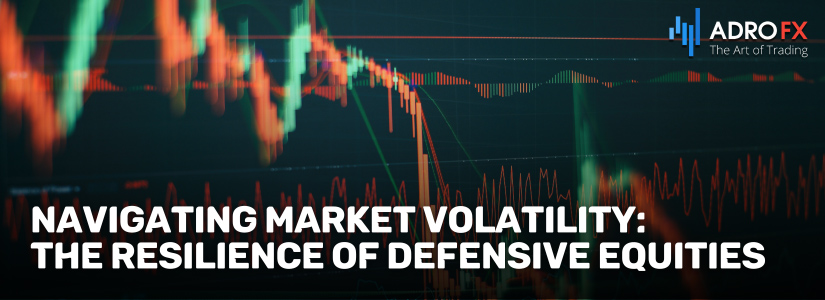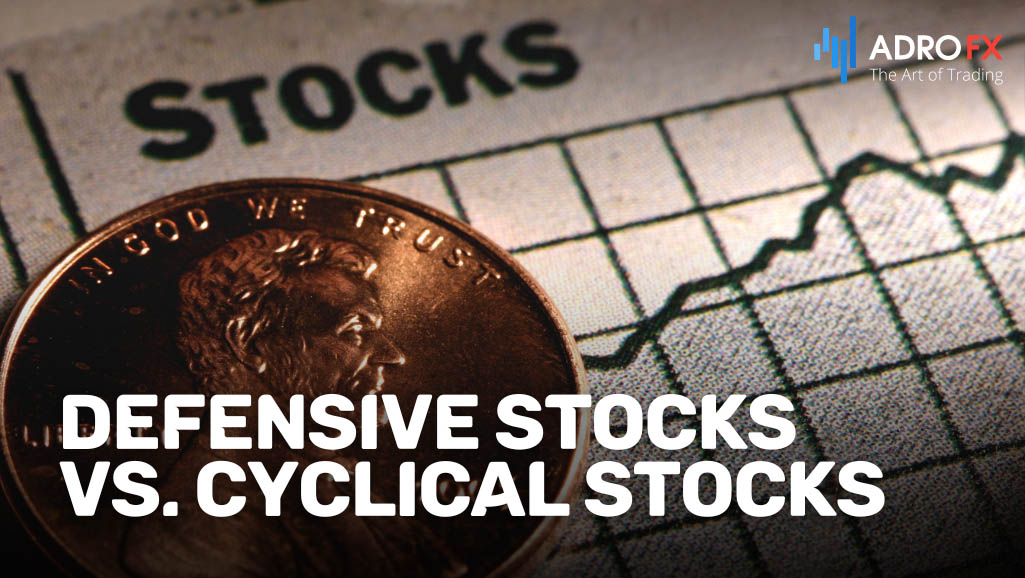Navigating Market Volatility: The Resilience of Defensive Equities

Defensive equities serve as a reliable financial cushion, especially during periods of market volatility. These stocks belong to sectors that demonstrate resilience amidst economic fluctuations, shielding investors from severe downturns. Industries such as consumer staples and utilities exemplify this stability, with products and services enjoying consistent demand, thereby ensuring steady earnings for these stocks.
For many investors, defensive equities are a cornerstone of risk management strategies. If capital preservation is a primary investment goal, incorporating these stocks into your portfolio becomes essential. They provide a hedge against the volatility of other investments, often retaining their value even when broader market indices decline. Integrating defensive equities into your investment mix can offer a well-rounded approach to asset allocation.
The Significance of Defensive Equities
In times of economic uncertainty, defensive stocks serve as a financial safeguard. Unlike cyclical counterparts that fluctuate with economic cycles, defensive equities typically maintain their share prices. This stability makes them invaluable for investors navigating bear markets or recessions, minimizing the risk of significant losses. Additionally, defensive stocks often provide reliable dividend income, offering a consistent stream of earnings when broader market performance falters.
Incorporating defensive equities aligns with a defensive investment strategy, prioritizing capital preservation. This approach ensures greater financial resilience, allowing investors to weather unfavorable market conditions more effectively. Particularly for risk-averse individuals or those nearing retirement, defensive stocks offer a secure albeit less aggressive path to achieving investment objectives.

Attributes of Defensive Stocks
Consistent Earnings
One defining trait of defensive stocks is their ability to maintain stable earnings across various market conditions. While cyclical stocks may experience income fluctuations tied to overall market performance, defensive equities typically demonstrate steady revenue streams. This reliability is highly valued by investors seeking to minimize portfolio volatility, especially during economic downturns.
The predictability of earnings also informs long-term investment strategies. Historical performance often highlights the consistent earning track record of defensive stocks, appealing to investors prioritizing reliability over high-risk, high-reward ventures.
Dividend Payments
Dividend distributions represent another appealing aspect of defensive stocks. Many established companies within defensive sectors prioritize shareholder value by offering regular dividend payouts. During economic downturns, these dividends can serve as dependable income sources.
The ability to sustain dividend payments often reflects a company's robust financial standing. For investors focused on both preserving capital and generating income, this characteristic enhances the attractiveness of defensive stocks. Dividends can be reinvested to acquire additional shares or utilized as a steady income stream, depending on individual financial objectives.
Industry Focus
Defensive stocks are predominantly concentrated in specific sectors known for their defensive characteristics, such as the consumer staples and utilities sectors. Companies within the consumer staples sector typically produce or distribute essential goods like food, beverages, and personal care items. The consistent demand for these products irrespective of economic conditions underpins the sector's stability.
Utility companies, another cornerstone of defensive sectors, offer indispensable services such as electricity, gas, and water. These services are considered necessities rather than luxuries, ensuring steady revenue streams for utility providers. Consequently, utility stocks tend to exhibit less sensitivity to market fluctuations, serving as safe harbors during economic uncertainty.
Examples Of Defensive Stocks
In the dynamic world of investing, where market volatility and economic uncertainty are commonplace, defensive stocks serve as reliable anchors for investors seeking stability amidst turbulence. These stocks, found across sectors known for their resilience to economic downturns, offer a sanctuary of consistency in an otherwise unpredictable landscape. From consumer staples to utilities and healthcare, defensive stocks embody characteristics that make them essential components of a balanced investment strategy. Let's delve into examples of defensive stocks and explore why they play a pivotal role in navigating the complexities of the financial markets.
Consumer Staples Sector
- Procter & Gamble (PG)
Known for its household consumer goods such as cleaning agents, personal care products, and hygiene essentials, Procter & Gamble's stable demand makes it a quintessential defensive stock. Regardless of economic conditions, the demand for its products remains relatively constant, providing a steady revenue stream.
- Coca-Cola (KO)
As a leading beverage company, Coca-Cola benefits from consumer preferences that remain consistent over time. The enduring popularity of its iconic soft drinks and diversified product portfolio across beverages ensures resilience against economic fluctuations.
Healthcare Sector
- Johnson & Johnson (JNJ)
Johnson & Johnson's diversified healthcare product portfolio, spanning pharmaceuticals, medical devices, and consumer health products, provides stability amid market turbulence. The essential nature of healthcare products and services ensures consistent demand, making JNJ a defensive stock choice.
- Pfizer Inc. (PFE)
As a global pharmaceutical company, Pfizer's focus on essential medications and vaccines underpins its defensive stock status. Healthcare remains a resilient sector, with demand for pharmaceutical products remaining steady irrespective of economic conditions.

Comparison: Defensive Stocks vs. Cyclical Stocks
Defensive stocks and cyclical stocks play distinct roles within investment portfolios, each presenting unique advantages and drawbacks. Defensive stocks are esteemed for their consistent earnings and resilience in economic downturns, making them pivotal for investors focused on capital preservation. These stocks typically belong to industries such as consumer staples and utilities, characterized by sustained demand regardless of economic fluctuations.
Conversely, cyclical stocks are often affiliated with industries highly sensitive to economic cycles. While offering greater potential for future growth, they also entail heightened volatility. Sectors like technology, real estate, and luxury goods fall into this category. Cyclical stocks tend to thrive during bullish market phases but may incur substantial losses during bear markets or economic contractions.
The selection between defensive and cyclical stocks frequently revolves around individual investment objectives and risk tolerance levels. Many investors opt for a balanced portfolio comprising both types of stocks. This approach enables them to leverage potential growth opportunities from cyclical stocks while maintaining a protective shield through defensive stocks. Such diversification can prove advantageous across varied market conditions, furnishing stability alongside growth potential.
Key Considerations for Investment Objectives
Investment objectives serve as guiding principles shaping investment decisions. For individuals with a low-risk tolerance, defensive stocks offer a secure avenue for capital preservation. These stocks are less susceptible to significant declines in bearish market phases, appealing to those prioritizing stability over substantial returns. Additionally, the steady dividends often associated with defensive stocks can serve as a reliable income source.
Conversely, if investment objectives prioritize future growth, defensive stocks may not align with such aspirations. Their potential for gains is typically more modest compared to cyclical stocks, which offer heightened growth prospects. For investors seeking to optimize returns, particularly in bullish market climates, cyclical stocks might better suit their objectives.
The crux lies in aligning investment objectives with suitable stocks for one's financial circumstances. Many investors adopt a diversified strategy, integrating both defensive and cyclical stocks into their portfolios. This approach aims to strike a balance between capital preservation needs and growth aspirations, fostering a comprehensive investment journey irrespective of market dynamics.
Approaches to Investment Decision-Making
When making investment decisions, a comprehensive evaluation of multiple factors is paramount, encompassing past performance, prevailing market conditions, and individual risk tolerance. While past performance can provide valuable insights into a stock or asset's behavior across economic cycles, it does not guarantee future outcomes. Understanding the broader market landscape, whether characterized by bullish or bearish trends, aids in selecting stocks aligned with one's investment objectives.
Seeking professional investment advice can significantly enhance this process. Financial advisors offer nuanced insights into market dynamics, assisting in identifying stocks, whether defensive or cyclical, that best suit individual investment goals. By evaluating your financial position and risk appetite, they facilitate informed decision-making, optimizing portfolio potential for both capital preservation and growth.
Market Dynamics and Interest Rate Influences
The Federal Reserve's role in interest rate determination profoundly impacts overall market performance. Low interest rates typically spur a bullish market environment, reducing borrowing costs and favoring cyclical stocks for growth potential. Conversely, defensive stocks, even when undervalued, may yield smaller gains but with lower associated risk.
Conversely, high-interest-rate environments often usher in bear markets, prompting a shift towards defensive stocks. These stocks, often from sectors like consumer staples or utilities, exhibit lower sensitivity to interest rates and market fluctuations. Consequently, they serve as a stable option for capital preservation during periods unfavorable for high-risk investments.
Personal Financial Goals and Risk Assessment
Personal finance objectives play a pivotal role in shaping investment decisions. For those prioritizing risk mitigation, defensive stocks offer an attractive proposition. With lower volatility and stable returns, they align well with environments characterized by a low risk-free rate, often benchmarked against government securities.
However, a holistic assessment of one's financial landscape is imperative before committing to any investment strategy. Considerations such as risk tolerance, liquidity requirements, and long-term goals must be factored in. A diversified portfolio, combining defensive stocks with other asset classes, ensures a balanced approach tailored to meet individual risk-return expectations. This diversified stance facilitates navigation through diverse market conditions, facilitating the attainment of personal financial objectives.
Summary
In conclusion, defensive equities stand as pillars of stability in the ever-changing landscape of investment. With their resilient performance during economic downturns and consistent earnings, these stocks offer investors a reliable means of safeguarding capital while providing opportunities for steady income. By incorporating defensive equities into a diversified portfolio and aligning investment decisions with individual financial goals, investors can navigate market volatility with greater confidence and resilience.
About AdroFx
Established in 2018, AdroFx is known for its high technology and its ability to deliver high-quality brokerage services in more than 200 countries around the world. AdroFx makes every effort to keep its customers satisfied and to meet all the trading needs of any trader. With the five types of trading accounts, we have all it takes to fit any traders` needs and styles. The company provides access to 115+ trading instruments, including currencies, metals, stocks, and cryptocurrencies, which make it possible to make the most out of trading on the financial markets. Considering all the above, AdroFx is the perfect variant for anyone who doesn't settle for less than the best.








